SKOWHEGAN — The Skowhegan Indian needs a facelift.

The Skowhegan Indian, a wooden statue by Bernard Langlais, is shown at 65 Madison Ave. in Skowhegan on Tuesday. The sculpture is 62 feet high and sits on a 20-foot base, and weighs about 24,000 pounds. It depicts a Wabanaki fisherman holding a spear in his left hand and a weir (fish trap) in his right. Rich Abrahamson/Morning Sentinel
The local landmark, a 62-foot-tall, 24,000-pound wooden sculpture of a Native American fisherman, is currently missing parts of its face and left arm.
But repairing a nearly 60-year-old work of art — let alone one made of rotting wood — is no easy task. The local chamber of commerce, which owns the statue, says it is figuring out a plan to fix it.
“We’re in the beginning stages of coming up with a plan,” said Luke York, who chairs the board of directors of the Skowhegan Regional Chamber of Commerce.
Recent damage led the chamber to request that the town block off the area around the Indian, in the municipal parking lot off Madison Avenue and High Street, with cones and yellow caution tape.
“We contacted the town just to keep things safe,” York said.
At least part of the face has been damaged since at least last fall, but it appears that a windstorm on Feb. 28 and 29 brought down the sculpture’s left arm and the spear it held.
“That (arm) assembly was tied to the metal spear, and so that lower arm section and the spear came to the ground,” said Stephen Dionne, a local builder whose construction company was contracted about 14 years ago to conduct major repairs on the sculpture. “It looks like it’s going to need some attention, that’s for sure.”

Pylons and police tape discourage people from getting close to The Skowhegan Indian, a 62-foot-high wooden statue by Bernard Langlais, shown at 65 Madison Ave. in Skowhegan on Tuesday. The statue sits on a 20-foot base and weighs about 24,000 pounds. It depicts a Wabanaki fisherman holding a spear in his left hand and a “weir” (fish trap) in his right. Rich Abrahamson/Morning Sentinel
Commissioned by the Skowhegan Tourist Hospitality Association in 1966, the Indian was completed in 1969 by artist Bernard Langlais, a student and teacher at the Skowhegan School of Painting and Sculpture, according to the chamber’s website.
Taller than 60 feet, and standing on a 20-foot base, some consider it to be the largest of its kind in the world, the chamber’s website says. The sculpture depicts the Wabanaki fisherman holding a spear in its left hand and a weir, or fish trap, in its right hand.
“The sculpture is dedicated to the Maine Indians,” a sign next to the sculpture reads, “the first people to use these lands in peaceful ways.”
More than 20 of Langlais’ other sculptures, many of which also are wooden, were given to the nonprofit Main Street Skowhegan by his estate in 2013 and have since been placed around the town. But the Indian, owned by the chamber, is by far the largest and perhaps most iconic in Skowhegan, where the school nickname for teams used to be the “Indians.”
Maine’s harsh climate has taken a toll on the wooden statue. When the Indian fell into poor condition more than a decade ago, Dionne completed a full restoration project, finishing in 2014.
“It really had been neglected for a long time,” Dionne said. “It had been outside for 45 years. So, we had to replace maybe 5% of the sculpture, and it was primarily all the horizontal pieces that don’t shed the water as easily as the more vertical pieces.”

The Skowhegan Indian, a 62-foot-high wooden statue by Bernard Langlais, is shown at 65 Madison Ave. in Skowhegan on Tuesday. The statue sits on a 20-foot base and weighs about 24,000 pounds. It depicts a Wabanaki fisherman holding a spear in his left hand and a weir (fish trap) in his right. Rich Abrahamson/Morning Sentinel
Both feet, the right forearm, several fingers, and part of the weir were replaced, Dionne said. The entire sculpture was repainted, and steps were taken to keep out animals who had made the inside of the statue their home.
Expecting the condition of the sculpture to deteriorate once again, Dionne left the chamber a detailed maintenance plan and offered to come back as needed to complete the work. But he never heard from them.
“No one called me to perform those inspections or assembly,” Dionne said. “But I didn’t know if they had members of the chamber that were willing to do that, maybe someone with a background in construction or art.”
Dionne said he recently presented some of the history of restoration to the chamber’s board and staff — many of whom were not part of the organization when he last repaired it.
The chamber is now trying to figure out how to fund another restoration, said York, the board chair. Several ideas for funding have been proposed, he said. The 2014 restoration cost about $65,000, according to a Morning Sentinel report from the time.
Besides funding, those involved also need to clarify who is responsible for the land where the Indian stands, said Sam Hight, dealer principal of the Hight Family of Dealerships and a chamber of commerce board member.
Town tax maps do not clearly show on which lot the Indian stands. But Hight said he believes the Indian is on land his family owns.
“It’s on a piece of land that’s technically owned by the Hights that has a land lease with the town, and then maybe with the chamber,” Hight said.
Hight said he was confident that the groups involved — the chamber, the town, Main Street Skowhegan, and others who work to preserve Langlais’ work — will straighten things out. They were meeting Thursday morning to continue discussing the issue, he said.
“People are thinking this is some weird conspiracy,” Hight said. “We’re just trying to figure out what to do with a 70-foot rotting Indian.”
Send questions/comments to the editors.


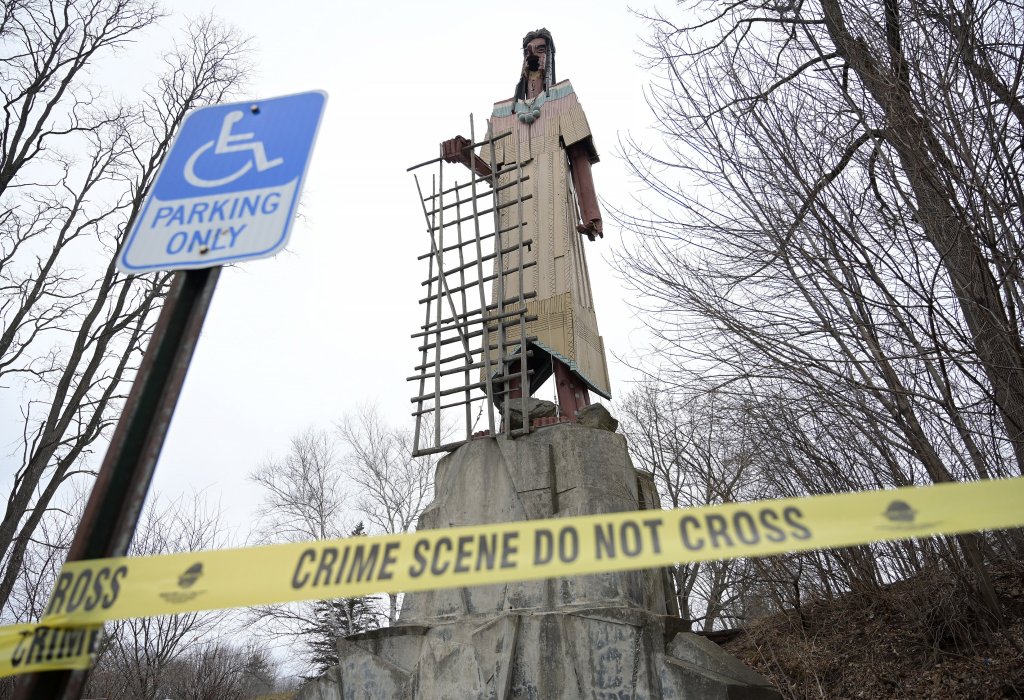
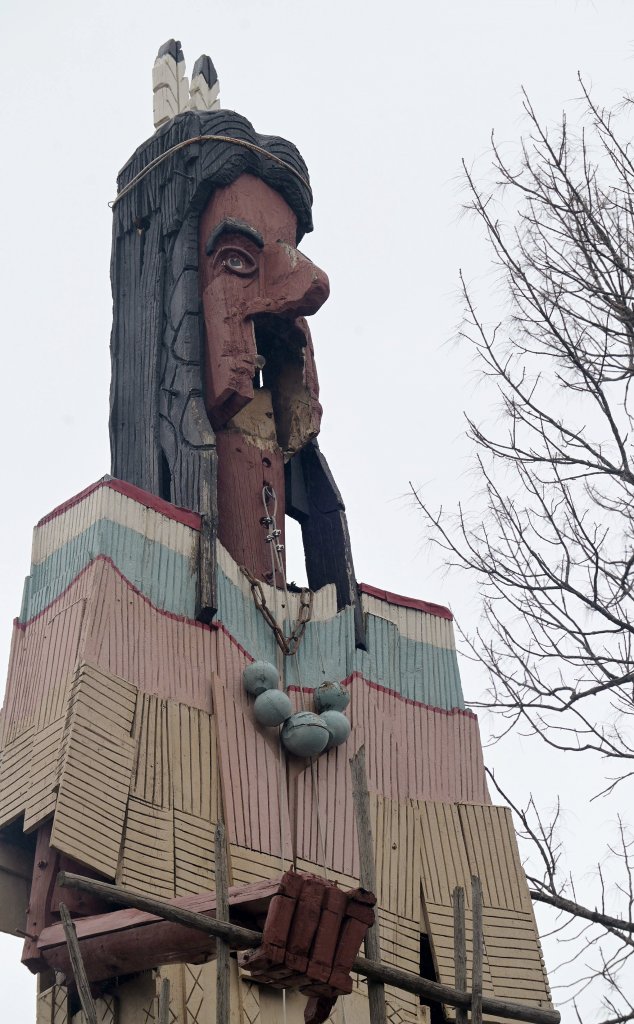
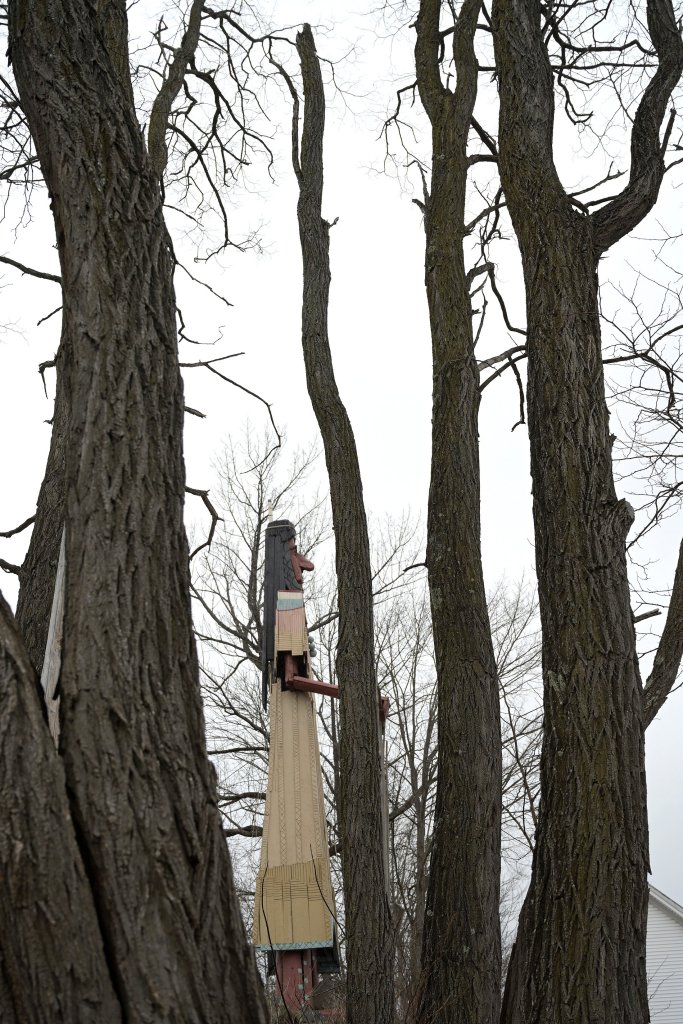
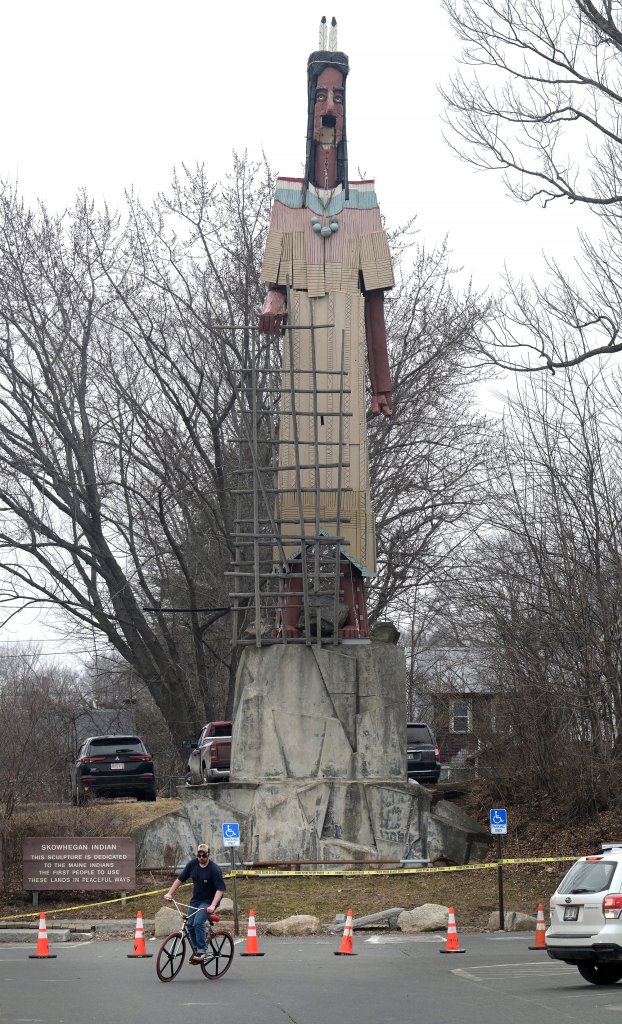
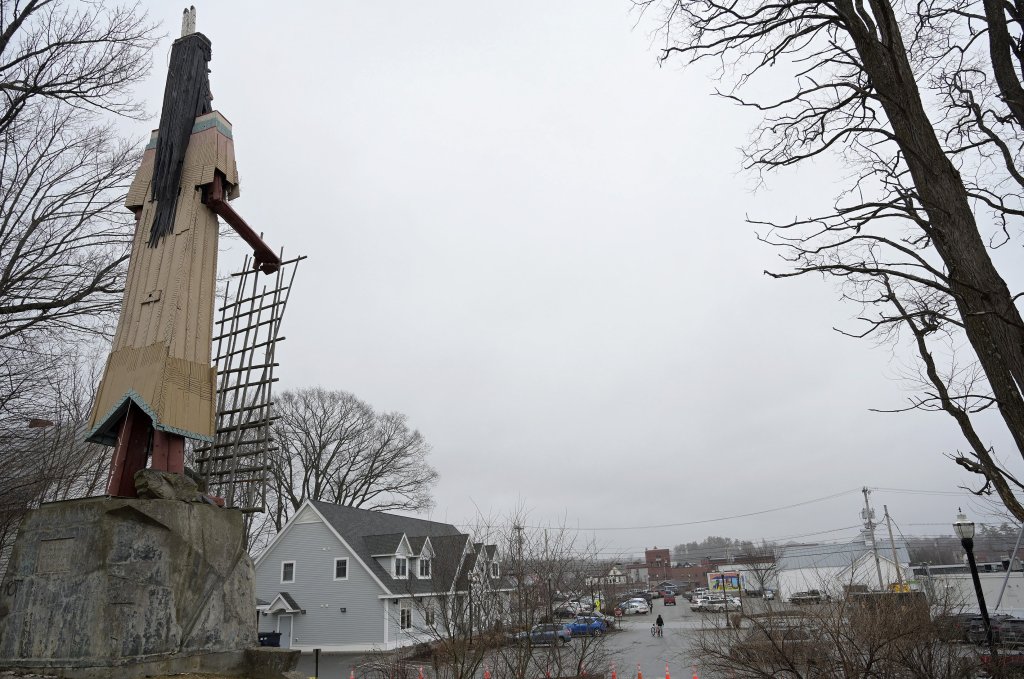

Comments are no longer available on this story